In today’s world, many of us are searching for calm amidst the chaos. Between demanding schedules, endless notifications, and life’s unexpected curveballs, finding balance can feel like an impossible goal. Meditation, however, offers a powerful solution for regaining that balance. It helps calm the mind, relax the body, and restore a sense of equilibrium.
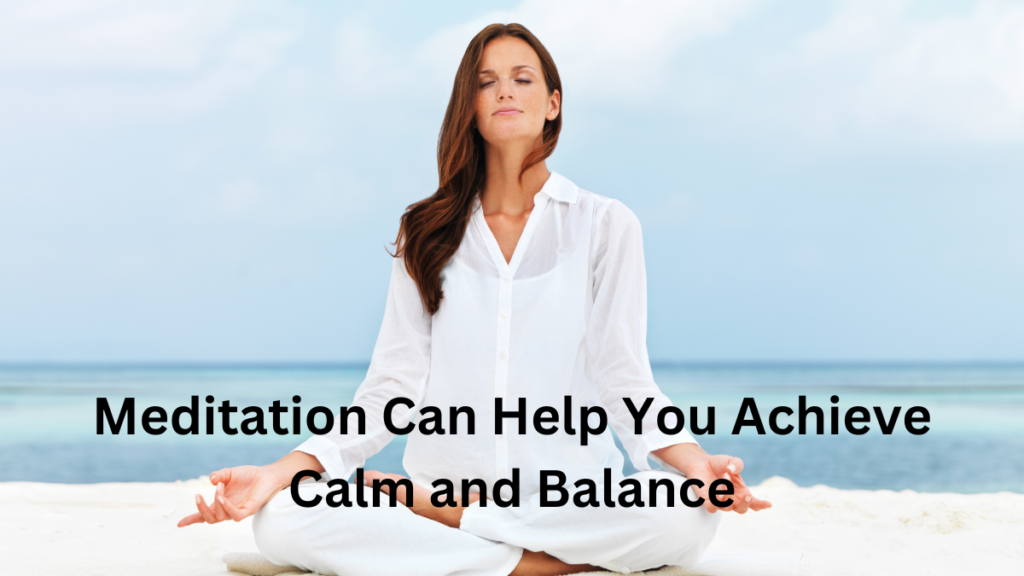
There are many forms of meditation, each with unique benefits, applications, and methods. In this post, we’ll explore eight types of meditation that can help you achieve calm and balance in your life. Whether you’re a beginner or have dabbled in meditation before, there’s a style suited to your needs and preferences.
Choosing a Meditation Method That Is Effective for You
There are various techniques for practicing meditation, such as concentrating on your breathing, being aware of your thoughts, or even deliberately moving your body. You can achieve some peace of mind and clarity with each technique.
You could not have discovered a style of meditation that suits you if you believed it was not for you, perhaps due to misconceptions you held about the practice.
To focus is the essence of meditation. Similar to “sports,” meditation is a broad phrase. Sports come in a plethora of forms and aid in the development of various skills. According to mindfulness and brain health expert Dorsey Standish, numerous forms of meditation offer distinct benefits for brain training.
Finding a meditation that works for you and brings you peace of mind is the aim of trying out various styles of meditation. So inhale deeply and get ready to discover eight different forms of meditation, their methods, and the advantages of selecting the right one for you.
1. Meditation with Mindfulness
Being in the present moment is the foundation of mindfulness meditation. It invites you to notice your ideas objectively. You only concentrate on your breathing or a single sense, such as the feel of your feet on the ground, as opposed to allowing your mind to jump about from one worry to the next.
Anywhere is a good place to practice mindfulness meditation, and even a short session can have a significant impact on your feelings. It’s an excellent method to use if you want to focus better, feel less stressed, or just be more aware of your surroundings.
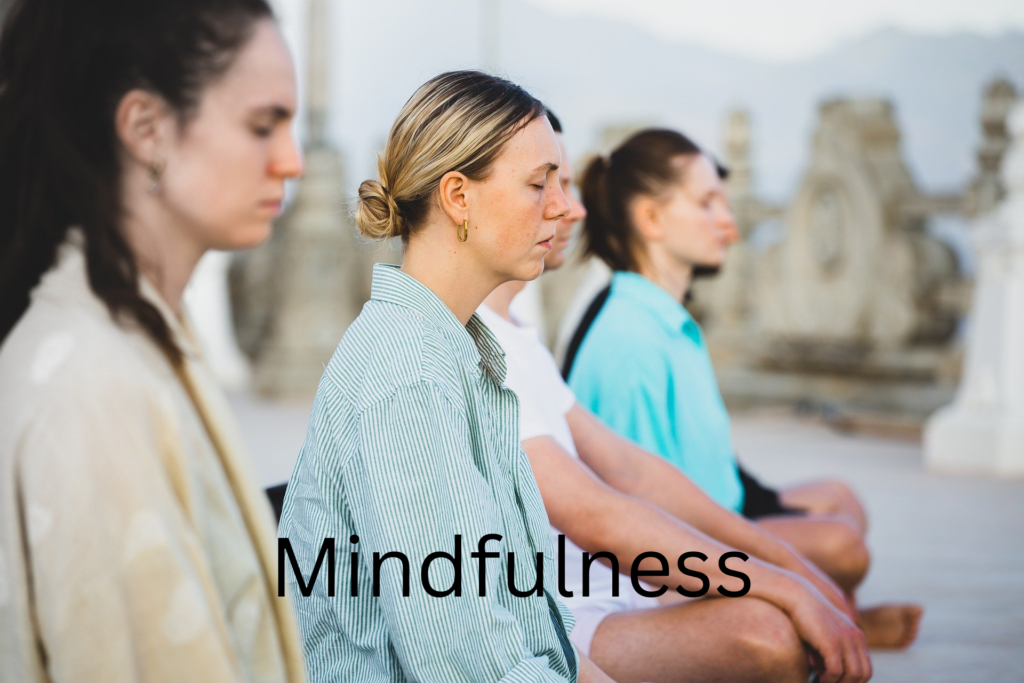
Method & Practice:
Sitting quietly and concentrating on the present moment while in a comfortable position are the hallmarks of mindfulness meditation. The most popular technique is to pay attention to your inhalation and exhalation of breath. You gently, and without passing judgment, return your focus to your breathing whenever your mind strays to ideas, worries, or other distractions.
To be mindful, one must be non-reactive. You pay attention to your thoughts and emotions without trying to control them or get sucked into them. You will eventually become more conscious of your mental and emotional habits as a result of this practice.
How to Meditate With Mindfulness:
- Locate a peaceful area free from interruptions.
- Take a comfortable seat with your back straight, preferably on a cushion or chair.
- Shut your eyes and pay attention to your breathing.
- Just admit it when your thoughts stray and focus on your breathing again.
- Begin with 5 to 10 minutes each day, and as you get more comfortable, progressively extend the duration.
Benefits:
1. Lessens tension and worry
2. Enhances cognitive function and attention
3. Strengthens emotional resiliency
4. Develop awareness of oneself
Applications :
Consciousness You may practice meditation in practically any place, and it’s one of the easiest types of meditation to learn. It works very well for calming down during the day, enhancing focus, and controlling tension and anxiety. You can incorporate mindfulness into any activity, whether you’re at work, on your commute, or at home, by keeping your attention on the here and now.
2. Meditation with a Guide
A guided meditation session can be the ideal place to start if you find sitting quietly scary. In this technique, an instructor or recorded voice guides you through the meditation process. They can also help you release tension, imagine calm settings, or concentrate on emotions like love or appreciation.
Beginners can benefit greatly from guided meditation because it offers structure and direction, which makes it easier to persist with the practice and reap its advantages. Thousands of free guided meditations, ranging from quick 5-minute sessions to longer, more involved practices, are available online.
Method & Practice:
For people who are new to meditation or want a more structured approach, guided meditation is perfect. This meditation practice involves being guided through a session by an instructor or audio guide, who frequently uses relaxation and focus-enhancing visualization techniques. Imagine yourself in a serene setting, like a beach or forest, or concentrate on certain topics, like appreciation, love, or relaxation, if you feel directed to do so.
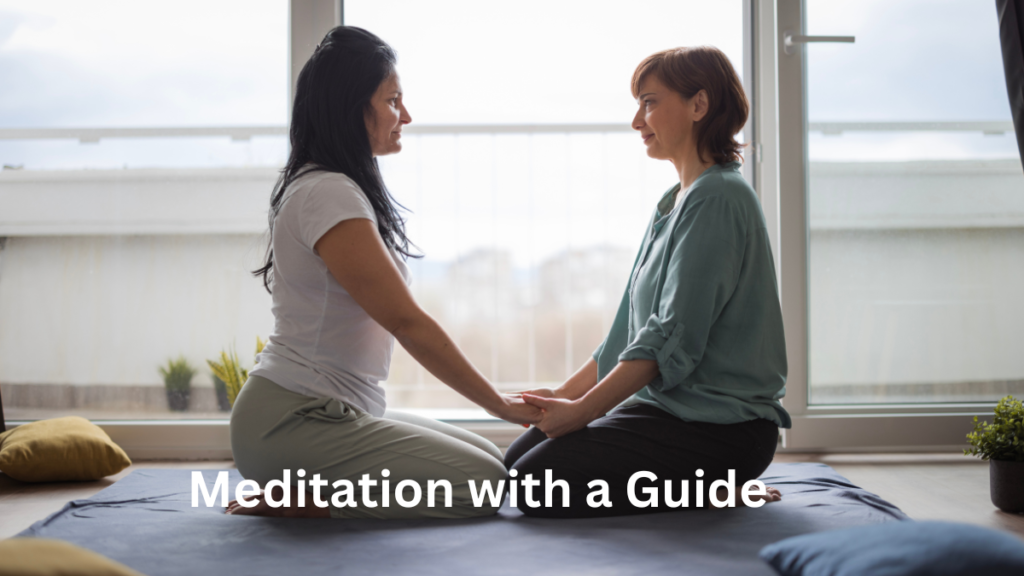
Using a Guided Meditation Practice:
- Pick a guided meditation (there are plenty on the internet or in apps) that suits your preferences.
2. Look for a spot to lie down or sit comfortably.
3. You can navigate the meditation by listening to the instructor’s guidance.
4. Distractions should be abandoned, and you should focus entirely on the encounter.
Benefits:
- Gives novices structure and guidance.
2. Enhances concentration and calmness by relieving tension and stress.
3. Improves emotional health.
Applications :
When you’re having trouble relaxing or feeling overwhelmed, guided meditation can be very helpful. It’s an excellent tool for de-stressing before bed, establishing a positive outlook for the day, or gradually introducing meditation without the demands of stillness or concentration. Numerous guided meditations are designed with certain objectives in mind, like enhancing creativity, reducing anxiety, or enhancing sleep.
3. Meditation on Loving-Kindness (Metta)
Metta, or loving-kindness meditation, focuses on developing an attitude of love and kindness toward both yourself and other people. Starting with oneself, you progressively spread your good vibes to family, friends, and even those you may not get along with.
This exercise helps to develop empathy and compassion and is profoundly nourishing for the heart and soul. In case you’re experiencing feelings of disconnection or frustration with the world, practicing loving-kindness meditation might be an effective method for developing optimistic feelings.
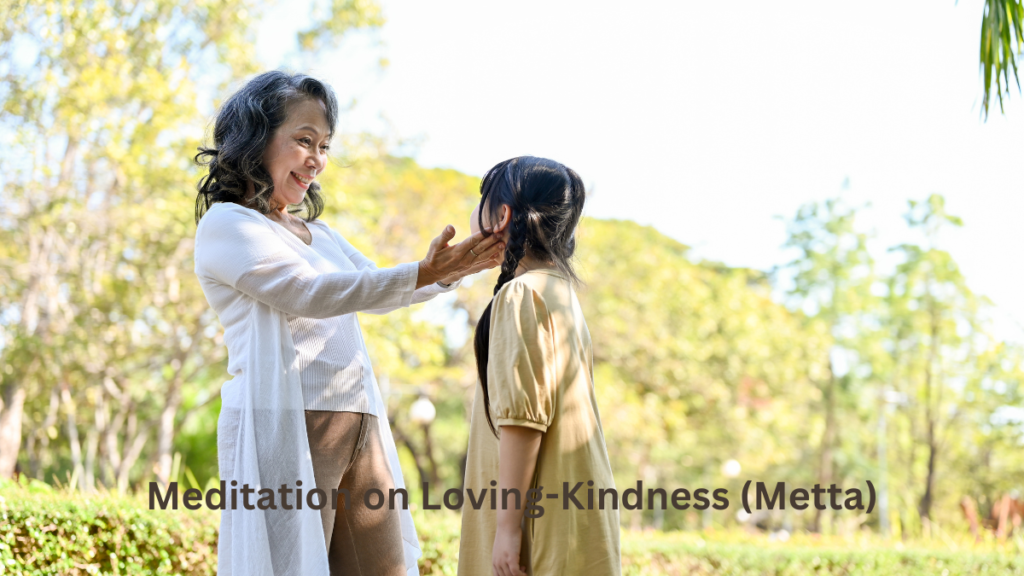
Method & Practice:
Compassionate communication Metta, the practice of meditation, is a way to develop loving and compassionate attitudes toward both oneself and other people. Reciting wishes to loved ones, acquaintances, and even those you may have disagreements with entails repeating lines like “May I be happy,” “May I be healthy,” and “May I be at peace.”
To cultivate positive feelings like kindness, empathy, and compassion as well as to soften your attitude and open your heart are the objectives.
How to Do Meditation on Loving-Kindness:
Take a comfortable seat and shut your eyes.
Start with good intentions for yourself. Say things out loud, such as “May I be happy.” May I live a healthy life?
Gradually share these good vibes with others, starting with close ones, then impartial parties, and lastly, folks you don’t get along with.
As you repeat the sentences, concentrate on the sensation of kindness and love.
Benefits:
Promotes empathy and compassion
lessens bitterness and angry feelings
enhances self-acceptance and mental health
strengthens social ties and partnerships.
Applications :
Kindness and love A useful technique for emotional development and healing is meditation. It is especially helpful for people who are experiencing feelings of loneliness, bitterness, or fury. Regular Metta practice can help you develop more loving relationships and a more sympathetic view of life.
4. Meditation Beyond Time (TM)
Transcendental Meditation is a practice in which you spend roughly 20 minutes, twice a day, silently repeating a mantra—a word or sound. It’s intended to let your thoughts turn inward and lead to a profoundly restful and relaxed condition.
TM is done in a very precise manner and is frequently taught by qualified teachers, in contrast to some other kinds of meditation. It is beneficial for many people in terms of stress reduction, enhanced attention, and a more profound sense of serenity.
Method & Practice:
Mantra-based meditation is the foundation of Transcendental Meditation (TM). In contrast to other types of meditation that concentrate on awareness or mindfulness, Transcendental Meditation (TM) entails repeating a particular mantra—usually a word or sound—for 20 minutes, twice a day, in silence. Reciting the mantra aids in bringing your mind to a peaceful, conscious condition.
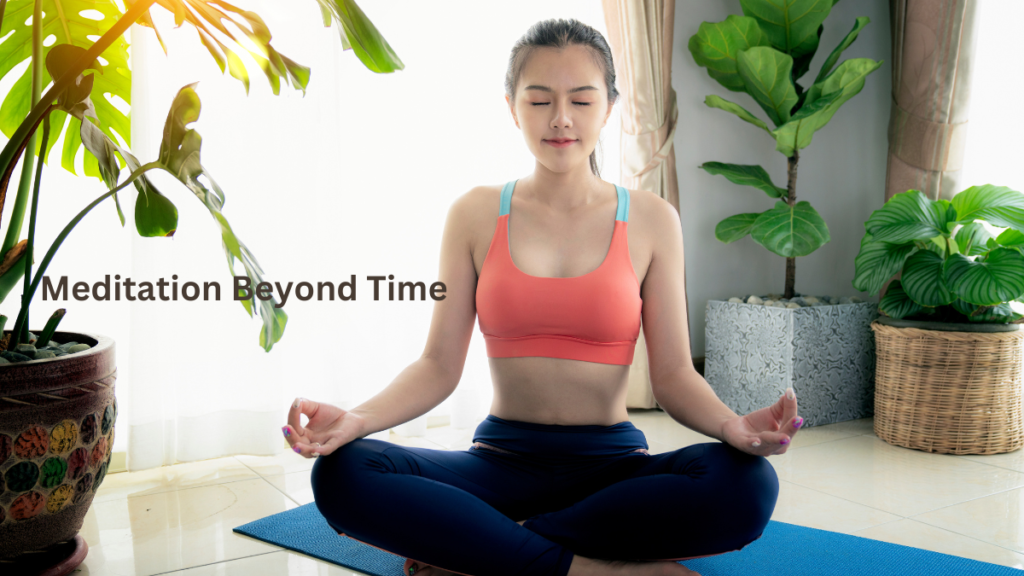
Guidelines for Transcendental Meditation Practice:
Close your eyes while you sit comfortably.
Repeat your mantra aloud in silence (typically given to you by a TM instructor).
When ideas come to mind, softly and impartially go back to the chant.
Ideally, practice for 20 minutes twice a day.
Benefits:
Encourages profound relaxation and lessens tension.
increases creativity and focus.
Boosts vitality and mental clarity.
enhances one’s general emotional health.
Applications:
People looking for a disciplined, regular meditation practice frequently engage in transcendental meditation. It works especially well to improve mental clarity, foster creativity, and manage stress. Since TM does not require any particular spirituality or religion, people from many walks of life can use it.
5. Body Scan Meditation:-
Body scan meditation may be a good fit for you if you have tension in your body. During this exercise, you “scan” your body mentally from head to toe, noting any tense or uncomfortable spots.
Focused attention is meant to alleviate tension and increase awareness of bodily sensations. When it comes to reestablishing a connection with your body and letting go of pent-up tension, body scan meditation is especially helpful for people who suffer from stress, anxiety, or chronic pain.
Method & Practice:
Body scan meditation is concentrating on various body parts, ranging from the head to the toes while noting any pain, stress, or other sensations. This technique facilitates the release of tension and fosters an awareness of the physical body.
How to Meditate Using Body Scan:
Shut your eyes, choose a comfortable posture to lie down, and unwind.
Pay attention to your breathing at first.
Bring your focus to your body gradually, working your way up to your head from your toes.
Observe any tension or feelings without passing judgment.
Breathe into tense spots to help them relax and soften.
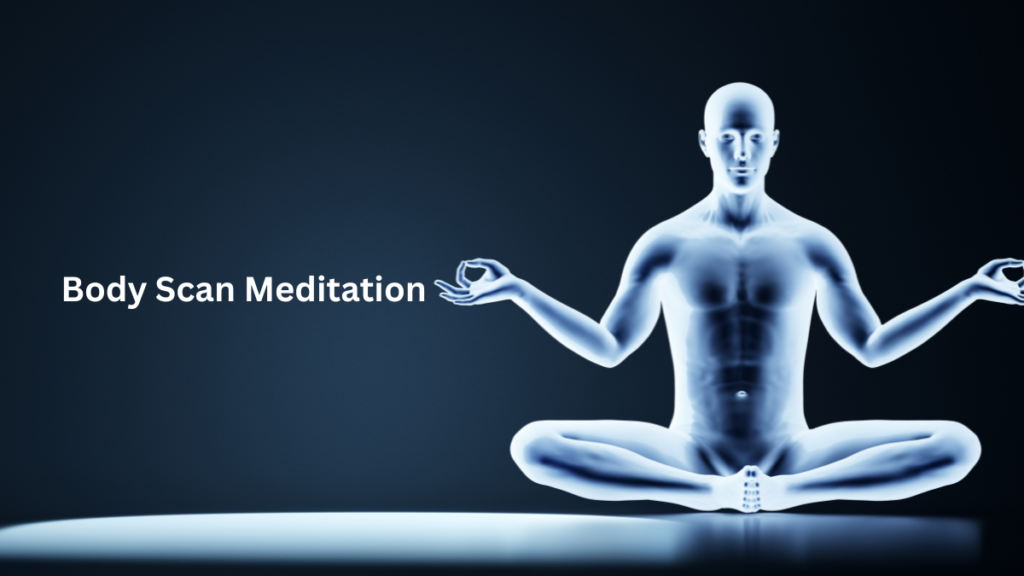
Advantages:
Reduces stress and anxiety, eases bodily and mental tension, and improves body awareness
encourages unwinding and restful sleep.
Applications:
People who suffer from stress, insomnia, or physical discomfort might try body scan meditation. It’s a fantastic method to relax before bed, relieve tension, and re-establish a connection with your body during difficult times. Those who are healing from an injury or managing chronic pain can also benefit from this approach.
6. Zen Meditation (Zazen):-
Zen Buddhism is the source of Zen meditation, also known as Zazen. It entails adopting a certain sitting position, paying attention to the breath, and letting go of judgment and attachment to thoughts.
Zen meditation stresses sitting motionless and just being present with whatever happens, which might make it difficult at times. But with time, it can result in increased mental clarity, serenity, and profound self-awareness.
Method & Practice:
Zazen meditation, often known as Zen meditation, is a type of sitting meditation that has long been used in Zen Buddhism. It entails adopting a certain sitting position, usually on a cushioned cross-legged position, with your hands folded into your lap and your back straight. The breath is the main focus, while thoughts are just noticed without any engagement or attachment.
How to Do Zen Meditation:
Maintain a straight spine when sitting in a comfortable position.
Your hands should be on your lap or on your knees.
Pay attention to how you are breathing, especially how your nose feels as air enters and exits it.
After observing any thoughts or outside distractions without participating in them, slowly go back to your breathing.
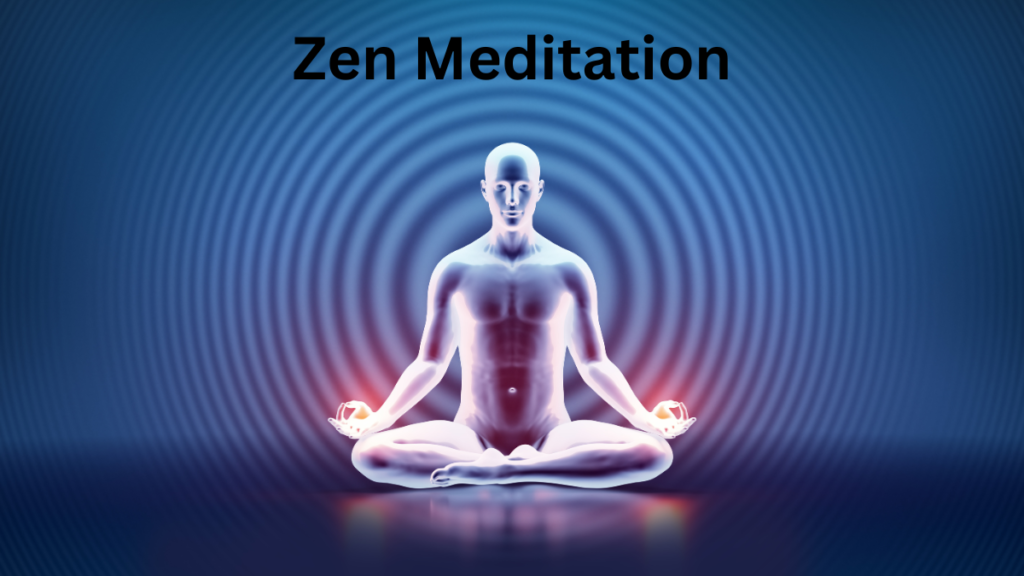
Advantages:
Improves concentration and mental clarity.
encourages emotional stability.
increases mindfulness and self-control.
increases one’s level of self-awareness.
7. Movement Meditation
Perhaps movement meditation would be more suitable for you if you have trouble staying motionless. Exercises like yoga, tai chi, and walking meditation help you become more aware of your body and the present moment by combining focused awareness with light physical movement.
You may establish a flowing, conscious connection with your body through movement meditation. It’s a great option for anyone who wishes to include some physical exercise in their meditation practice or who finds traditional seated meditation to be too inert.
Method & Practice:
Movement meditation blends focused awareness with physical exercise. Exercises that help you stay in the present moment and concentrate on your movements include yoga, tai chi, and walking meditation. Developing a sensation of flow and coordinating your breathing with your movements are the objectives.
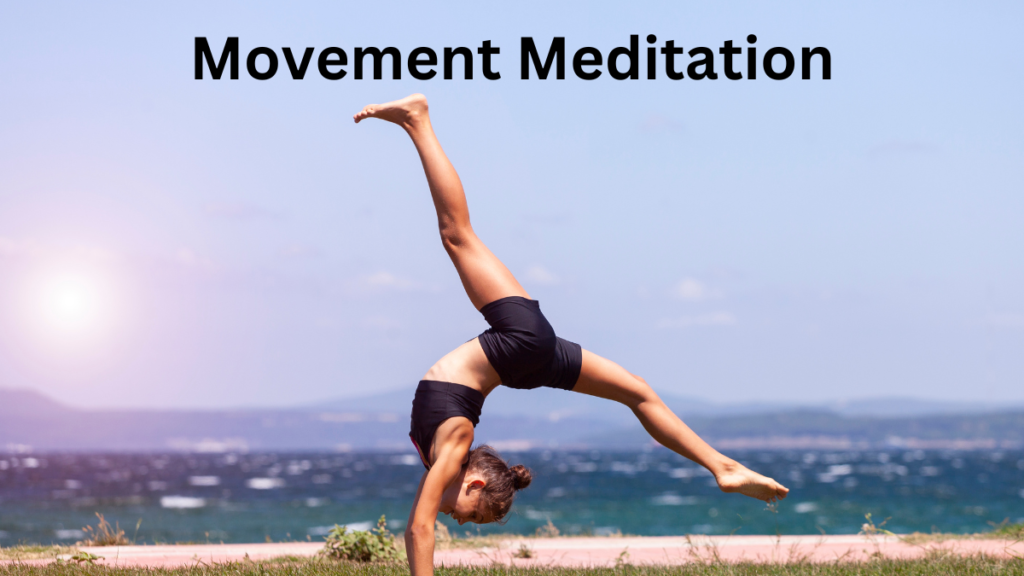
Methods for Doing Movement Meditation:
Select a type of exercise, like tai chi, yoga, or walking.
As you move, pay attention to how your body feels.
Move in unison with your breathing and remain mindful of the current moment.
Distractions should be abandoned when you lose yourself in the movement’s rhythm.
Benefits:
Promotes a stronger mind-body bond.
lessens anxiety and tension.
increases flexibility and physical well-being.
improves emotional equilibrium and mindfulness.
Applications:
For many who find traditional seated meditation difficult, movement meditation is ideal. It’s a great option for people who want a more active kind of meditation because it enables you to practice mindfulness while exercising. Additionally, this exercise is excellent for enhancing strength, flexibility, and mental clarity.
How Does Daily Meditation Affect Your Brain?
8. Chakra Meditation
The goal of chakra meditation is to balance your body’s energy centers or chakras. You can remove blockages and bring balance back by imagining the chakras as spinning wheels of energy and concentrating on their corresponding colors and attributes.
If you want to connect with a deeper level of spirituality or create more harmony in your life, this kind of meditation is perfect for you. Chakra meditation is often used by practitioners who report feeling more grounded, energized, and connected to their inner selves.
The potent practice of chakra meditation focuses on balancing and lining up the body’s energy centers, or chakras. This type of meditation, which has its roots in ancient Indian practices, is meant to facilitate the smooth passage of energy throughout the body to enhance mental, emotional, and spiritual well-being. There are seven primary chakras, and each one is linked to a certain place, hue, and quality.
This section will explain chakra meditation, explain how to do it, and discuss the advantages and uses of chakra balance.
How do Chakras work?
The Sanskrit term for “chakra” means “wheel” or “disk.” Chakras, which are thought of as spinning wheels of energy down the spine, are relevant to meditation and energy work. Various facets of our mental, emotional, and spiritual existence are symbolized by each of the seven main chakras. Medical conditions, psychological problems, or a sense of detachment might result from these chakras being blocked or out of balance.
The positions of the seven primary chakras are as follows:
Muladhara, or the root chakra, is the base of the spine and is connected to stability and grounding.
The lower abdomen, sacral chakra (Svadhisthana), is linked to creativity and sexuality.
The upper abdomen, or solar plexus chakra (Manipura), is connected to strength and confidence.
The center of the chest, or the heart chakra (Anahata), is linked to compassion and love.
Throat Chakra (Vishuddha): The throat region is connected to truth and communication.
Between the eyebrows, the Third Eye Chakra (Ajna) is linked to insight and intuition.
The crown chakra (Sahasrara), located at the top of the head, is connected to enlightenment and spirituality.
How to Do Meditation with Chakras
The technique of chakra meditation involves concentrating on each chakra, imagining it to be a revolving wheel of light, and making sure that energy is smoothly flowing through it. The following is a step-by-step instruction manual for chakra meditation:
Step 1: Locate a Cozy Area
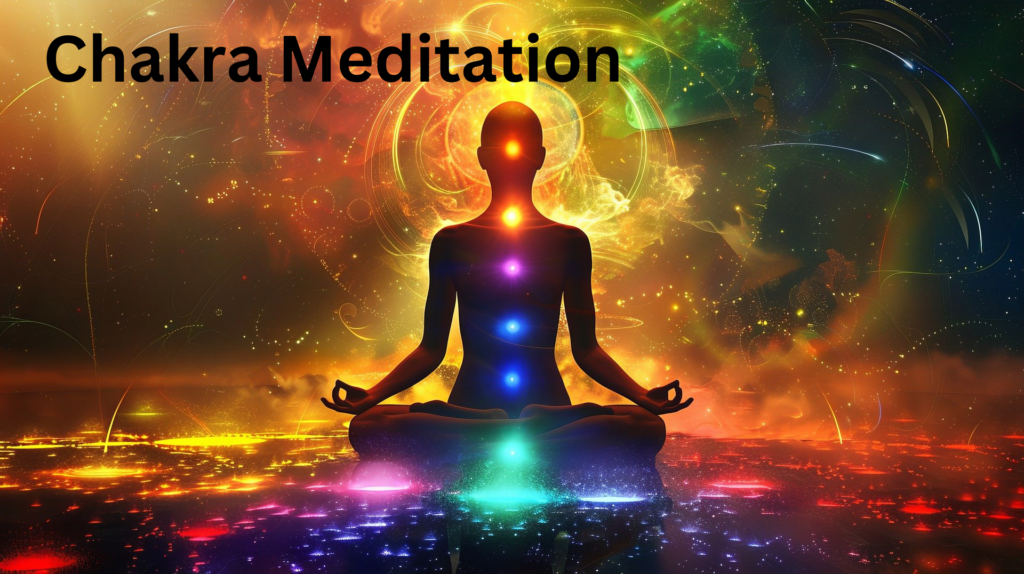
Locate a calm, quiet area where you can comfortably sit or lie down without being bothered. It’s ideal to dress comfortably and loosely to promote the free flow of energy.
Step 2: Decide What You Want
Make sure your practice has a clear intention before you start. You may choose to work on balancing one chakra in particular or all seven. You can also concentrate on healing or general well-being.
Step 3: Take a Deep Breath First
Shut your eyes and inhale deeply many times. Breathe in deeply via your nose, filling your lungs, and then gently release the air through your mouth. This eases mental tension and gets you ready for meditation.
Step 4: Create an image of Every Chakra
Beginning at the base of your spine, focus on the Root Chakra. Think of it like a spinning red energy wheel. Envision this wheel rotating at full speed while releasing a bright light. Given that feelings of security are connected to this chakra, notice how grounded and solid you feel.
Imagine the Sacral Chakra, which is located in the lower abdomen, as a vivid orange wheel. This chakra is associated with sexuality, creativity, and emotions. Imagine it turning smoothly and emitting a warm glow.
Next, concentrate on the upper abdomen’s Solar Plexus Chakra. Imagine a vibrant yellow wheel of energy that is free to spin. This chakra is associated with self-assurance and strength. As you concentrate on this area, you’ll feel strong and driven.
Focus on the Heart Chakra located in the middle of your chest. Imagine a spinning green energy wheel that stands for emotional healing, love, and compassion. Envision this chakra expanding and releasing love for both you and other people.
Proceed to your throat to activate the Throat Chakra. Imagine a dazzling blue energy wheel in motion, symbolizing self-expression and communication. Feel the honesty and truth coursing through your thoughts and words.
Next, concentrate on your eyebrows’ intersection, which is home to the Third Eye Chakra. Imagine a free-spinning indigo energy wheel. Intuition and insight are linked to this chakra.. Imagine that wisdom and clarity are flowing through this hub of energy.
Lastly, focus on the Crown Chakra, which is situated atop your head. Imagine a whirling wheel of energy, either violet or white. Enlightenment and your spiritual connection are associated with this chakra. Experience a feeling of cohesion and unity with the cosmos.
Step 5: Inhale deeply into every chakra
Breathe deeply and visualize energy flowing freely through each chakra as you concentrate on it. Breathe into any stress or blocks you may be experiencing, and picture the energy resolving into harmony and balance. Before going on to the next chakra, give each one the time and attention it deserves.
Step 6: Conclude Your Meditative Practice
After you’ve cleared every chakra, take a few deep breaths and see your whole body radiating brilliant, balanced energy. Return your focus to the here and now with gentleness, and pause to experience inner serenity and equilibrium.
The advantages of chakra meditation
Numerous advantages exist for the physical, emotional, and spiritual well-being of practitioners of chakra meditation. You may remove obstacles, encourage healing, and create greater harmony in your life by concentrating on these energy centers.
Here are a few of the main advantages:
- Harmony of Emotions
By harmonizing the energy centers that give rise to unpleasant emotions, such as wrath, fear, and resentment, chakra meditation facilitates their release. You can get more emotional stability, calm, and compassion by resolving emotional barriers. - Physical Recovery
There are connections between each chakra and several body parts and organs. Physical illnesses or pain can be the result of a blocked chakra. By assisting in the release of these obstructions, chakra meditation enhances general health and encourages physical healing.
For instance, difficulties with the legs or lower back may result from an uneven Root Chakra, whereas tightness in the chest or heart problems may indicate an unbalanced Heart Chakra.
- Enhanced Sensitivity and Perception
The qualities of insight, clarity, and intuition are linked to the Third Eye Chakra. You can improve your intuition skills and feeling of purpose in life by concentrating on this chakra. In addition to improving general awareness and mindfulness, chakra meditation makes you more sensitive to your thoughts, feelings, and surroundings. - Spiritual Development
Universal consciousness and spiritual enlightenment are associated with the Crown Chakra. You can improve your feeling of meaning and purpose in life as well as your spiritual connection by consistently engaging in chakra meditation. - Enhanced Vitality and Energy
You feel more alive and in tune with yourself when your chakras are balanced and energy is flowing freely. Chakra blockages can cause weariness, sluggishness, and a sense of immobility. By assisting in the restoration of equilibrium, chakra meditation makes you feel more alive and invigorated.
Uses for Chakra Meditation
There are many ways to incorporate chakra meditation into daily life. Here’s how to put it to use: - Reduction of Stress
If you’re experiencing stress, concentrate on balancing your Solar Plexus Chakra to restore confidence and control over your life, or your Heart Chakra to aid in emotional healing. - Strengthening Bonds
Your relationships might be more compassionate and have better communication when your throat and heart chakras are in balance. - Enhancing Originality
Concentrate on balancing your Sacral Chakra to spark creativity. This can help free up creative energy and infuse your efforts with new concepts and inspiration. - Getting Rid of Anxiety and Fear
If you are experiencing anxiety or fear, balance your Root Chakra (connected to feelings of security and safety). - Developing Your Spiritual Practice
Meditation on chakras can be a very effective method for spiritual development. You can cultivate a stronger sense of connectedness to the world and a deeper level of spiritual awareness by routinely balancing your Crown and Third Eye Chakras.
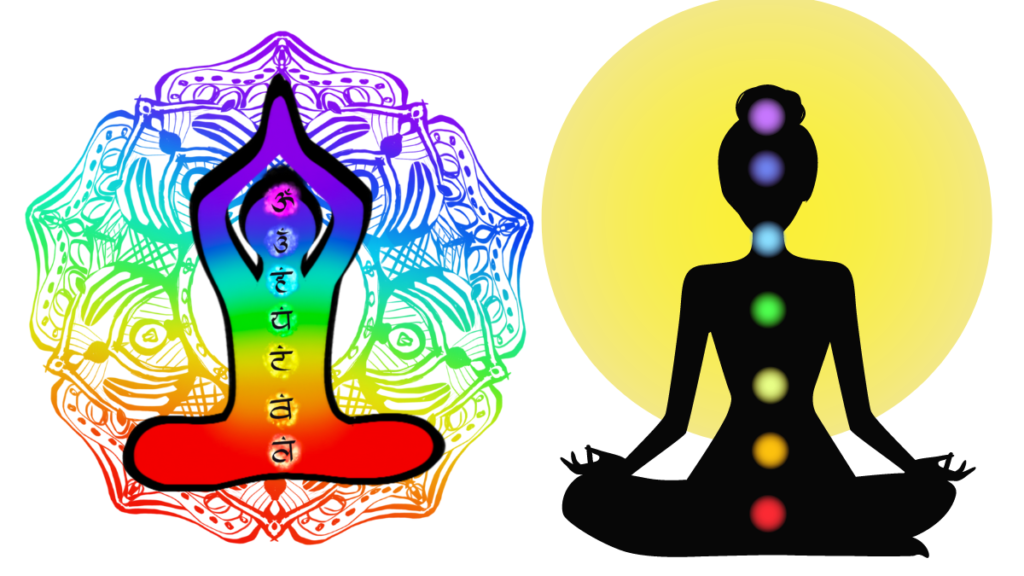
Conclusion: Selecting Your Ideal Meditation
Every meditation method has its advantages, whether your goal is to improve your spiritual practice, build emotional resilience, or simply decelerate your thoughts. The secret is to investigate these various kinds and select the one that speaks to you. As you start your meditation practice, keep in mind that regularity is essential. Be kind to yourself, start small, and increase your practice bit by bit. You’ll discover that meditation not only makes you feel more at ease but also changes how you view life.
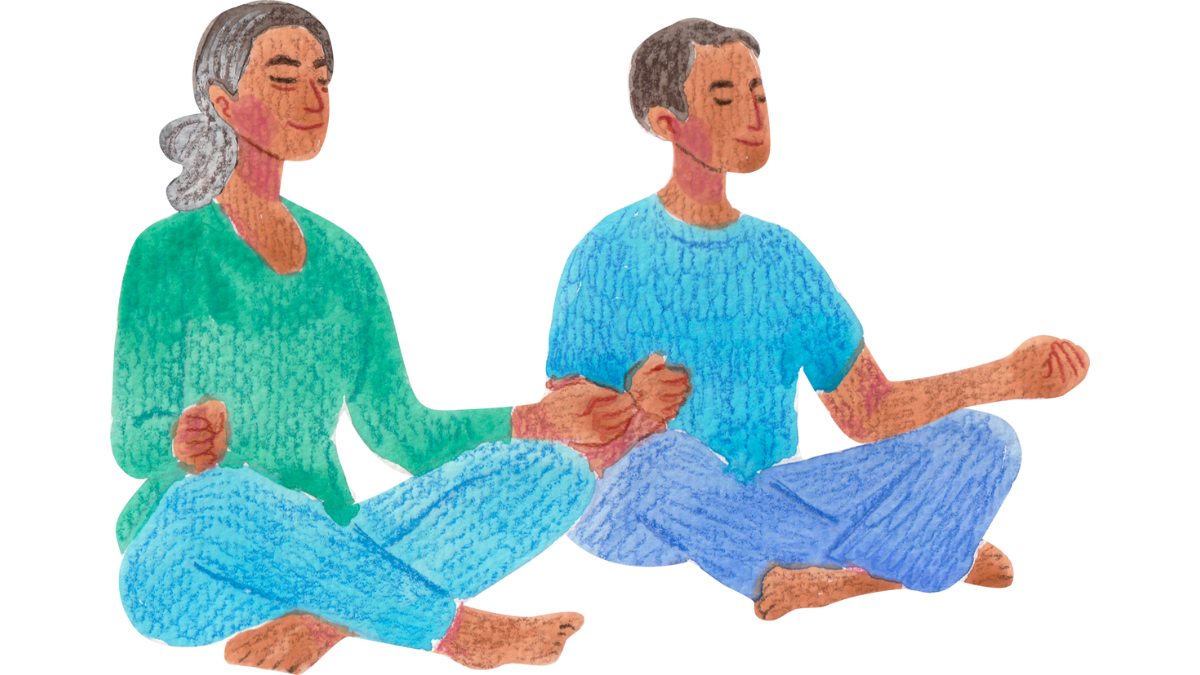
Bahis siteleri Google SEO, dijital pazarlama stratejimizde önemli bir rol oynuyor. http://www.royalelektrik.com/
There is definately a lot to find out about this subject. I like all the points you made
Awesome! Its genuinely remarkable post, I have got much clear idea regarding from this post
I’m often to blogging and i really appreciate your content. The article has actually peaks my interest. I’m going to bookmark your web site and maintain checking for brand spanking new information.
Henof I do not even understand how I ended up here, but I assumed this publish used to be great
I am truly thankful to the owner of this web site who has shared this fantastic piece of writing at at this place.
BYU Cougars This is really interesting, You’re a very skilled blogger. I’ve joined your feed and look forward to seeking more of your magnificent post. Also, I’ve shared your site in my social networks!
Mating Press I appreciate you sharing this blog post. Thanks Again. Cool.
Masalqseen I appreciate you sharing this blog post. Thanks Again. Cool.
Touch to Unlock I’m often to blogging and i really appreciate your content. The article has actually peaks my interest. I’m going to bookmark your web site and maintain checking for brand spanking new information.
Blue Techker very informative articles or reviews at this time.
Blue Techker very informative articles or reviews at this time.
Thinker Pedia I very delighted to find this internet site on bing, just what I was searching for as well saved to fav
Strands Hint Great information shared.. really enjoyed reading this post thank you author for sharing this post .. appreciated
Mountsinai I just like the helpful information you provide in your articles
Ezippi This is my first time pay a quick visit at here and i am really happy to read everthing at one place
Smartcric naturally like your web site however you need to take a look at the spelling on several of your posts. A number of them are rife with spelling problems and I find it very bothersome to tell the truth on the other hand I will surely come again again.
Packachange naturally like your web site however you need to take a look at the spelling on several of your posts. A number of them are rife with spelling problems and I find it very bothersome to tell the truth on the other hand I will surely come again again.
Bwer Company is a top supplier of weighbridge truck scales in Iraq, providing a complete range of solutions for accurate vehicle load measurement. Their services cover every aspect of truck scales, from truck scale installation and maintenance to calibration and repair. Bwer Company offers commercial truck scales, industrial truck scales, and axle weighbridge systems, tailored to meet the demands of heavy-duty applications. Bwer Company’s electronic truck scales and digital truck scales incorporate advanced technology, ensuring precise and reliable measurements. Their heavy-duty truck scales are engineered for rugged environments, making them suitable for industries such as logistics, agriculture, and construction. Whether you’re looking for truck scales for sale, rental, or lease, Bwer Company provides flexible options to match your needs, including truck scale parts, accessories, and software for enhanced performance. As trusted truck scale manufacturers, Bwer Company offers certified truck scale calibration services, ensuring compliance with industry standards. Their services include truck scale inspection, certification, and repair services, supporting the long-term reliability of your truck scale systems. With a team of experts, Bwer Company ensures seamless truck scale installation and maintenance, keeping your operations running smoothly. For more information on truck scale prices, installation costs, or to learn about their range of weighbridge truck scales and other products, visit Bwer Company’s website at bwerpipes.com.
gab Good post! We will be linking to this partspacelarly great post on our site. Keep up the great writing
Your point of view caught my eye and was very interesting. Thanks. I have a question for you.
Your article helped me a lot, is there any more related content? Thanks!
Thank you for your sharing. I am worried that I lack creative ideas. It is your article that makes me full of hope. Thank you. But, I have a question, can you help me?
Can you be more specific about the content of your article? After reading it, I still have some doubts. Hope you can help me.
Your point of view caught my eye and was very interesting. Thanks. I have a question for you.
Thanks for sharing. I read many of your blog posts, cool, your blog is very good.
Mitolyn naturally like your web site however you need to take a look at the spelling on several of your posts. A number of them are rife with spelling problems and I find it very bothersome to tell the truth on the other hand I will surely come again again.
PrimeBiome This is my first time pay a quick visit at here and i am really happy to read everthing at one place
Thank you for your sharing. I am worried that I lack creative ideas. It is your article that makes me full of hope. Thank you. But, I have a question, can you help me?